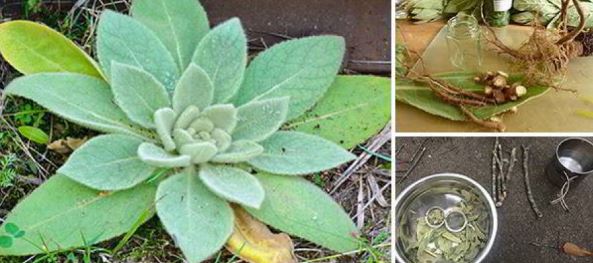
The Only Plant That Should Be in Your First Aid Kit
Mullein, formally known as verbascum thapsus, is oftentimes called velvet plant or elephant’s ear due to the hairy leaves that are, rather than being prickly as are most fuzzy-looking plants, quite soft and supple.
This herb can be found abundantly in most environments, even where no one intended it to grow, and like many plants that people call weeds, it has many uses in everyday life and particularly in survival situations. In taking a look back at how our forefathers used mullein, we can get a good idea of how it could help us if the world as we know it comes to an end.
Practical Uses
The soft fuzzy nature of mullein gives its leaves plenty of practical applications, both historically and in survival situations. The rest of the plant could potentially play a role in an SHTF situation, as well.
 TP- Before the advent of toilet paper or simply in a pinch in the woods, this leaf makes for a soft, pleasant toilet paper alternative. In fact, the folk name of this plant is The Cowboy’s Toilet Paper. The large leaves and gentle texture make it an ideal solution, though you should be cautious to wipe with the grain of the hairs to reduce irritation caused by shedding fuzz. Here are more homemade substitutes for toilet paper.
TP- Before the advent of toilet paper or simply in a pinch in the woods, this leaf makes for a soft, pleasant toilet paper alternative. In fact, the folk name of this plant is The Cowboy’s Toilet Paper. The large leaves and gentle texture make it an ideal solution, though you should be cautious to wipe with the grain of the hairs to reduce irritation caused by shedding fuzz. Here are more homemade substitutes for toilet paper.- Providing Warmth- They are also great for providing extra warmth. Whether you’re lining your clothing with these leaves to provide extra cushion and warmth, or preparing a blanket or small shelter from them to stay warm at night, the furry leaves are great for adding extra insulation.
- Fire-Starting- Mullein has several fire-building applications. The stalks make an ideal implement for the bow or hand drill fire starting methods. The dried leaves and seed pods are fantastic tinder for fire starting. Dipped in any liquid fat, flammable sap, or beeswax, the seed heads attached to the stalks are great for torches, earning mullein, along with the yellow flowers, another of its nicknames: golden torch.
- Fish Tranquilizer- The seeds of this plant can be used as a paralytic agent of fish. This could help in collecting fish for food or other purposes in a survival situation.
 Shoe Insoles- The leaves can provide cushions in shoes when conventional insoles are no longer an option. Combined with the medicinal properties of the leaves, mullein leaf insoles can help to reduce friction that causes blisters and keep feet free from infection.
Shoe Insoles- The leaves can provide cushions in shoes when conventional insoles are no longer an option. Combined with the medicinal properties of the leaves, mullein leaf insoles can help to reduce friction that causes blisters and keep feet free from infection.
Medical Applications
These plants, which are found in the wild and in herb gardens all over the world, have been used by healers for ages for assorted uses. As is always the case, be cautious when using herbal remedies to treat any condition, and you should consult a physician before using herbal medicine (assuming one is available).
 Chest Complaints- The dried or fresh flowers of the mullein plant are often used to improve coughs and other lung and airway issues such as bronchitis, asthma, or croup. Historically, it was frequently used to treat consumption or tuberculosis. Tea made from mullein with honey added makes a great sore throat cure. It is a well-known cold and flu remedy. It’s great for these things because of its expectorant and soothing properties, plus its ability to fight infection.
Chest Complaints- The dried or fresh flowers of the mullein plant are often used to improve coughs and other lung and airway issues such as bronchitis, asthma, or croup. Historically, it was frequently used to treat consumption or tuberculosis. Tea made from mullein with honey added makes a great sore throat cure. It is a well-known cold and flu remedy. It’s great for these things because of its expectorant and soothing properties, plus its ability to fight infection.- Pain Reliever, Anti-Inflammatory, Soother- This plant is said to help reduce pain and inflammation when used topically on the affected area or in a tonic or tea with effects similar to aspirin or modern-day NSAIDs and acetaminophen. The ability to apply this anti-inflammatory skin soother topically makes it an ideal remedy for hemorrhoids, as well.
 Infection Fighter- Cowboy’s bandages are called just that because it makes a great bandage, even where more modern alternatives are available. This is because it has antibacterial, antiviral, and antifungal properties. This means that along with providing a soft, gentle barrier, the leaves of the mullein plant can help fight off infection in wounds. Tea made from the mullein plant has also been used as a sort of internal antibiotic for treating mild infections. Clinical indications show that mullein may be an effective home remedy for ear infections when placed directly into the ear as a part of an herbal solution. Here are 5 infections you are most likely to catch when SHTF.
Infection Fighter- Cowboy’s bandages are called just that because it makes a great bandage, even where more modern alternatives are available. This is because it has antibacterial, antiviral, and antifungal properties. This means that along with providing a soft, gentle barrier, the leaves of the mullein plant can help fight off infection in wounds. Tea made from the mullein plant has also been used as a sort of internal antibiotic for treating mild infections. Clinical indications show that mullein may be an effective home remedy for ear infections when placed directly into the ear as a part of an herbal solution. Here are 5 infections you are most likely to catch when SHTF.- Helps Heal Bruises and Other Injuries- A poultice of mullein leaves and flowers is oftentimes used to improve the condition of bruises and damaged connective tissue or bones. The pain-relieving and anti-inflammatory properties of this plant make it ideal for helping broken bones and sprains and strains to be less painful.

- Bladder Health Support- This herb, the root, in particular, is often used to help support the urinary system. It is frequently used to treat urinary incontinence in bedwetting children and adults with bladder control issues. Urinary tract infections may also be treated with mullein.
In the Garden
- Adding Plant Life in Areas Ravaged by Animals- Most animals, like goats and deer, avoid eating mullein. This means that the hearty herb is a great way to keep an area from being eaten down to soil when these animals are damaging the landscape. Keeping plant life in the soil can help to prevent erosion and flooding in an area.
- Adds Nitrogen to Soil- This plant gives vital nitrogen back to the soil, so it can be used to improve soil conditions for other plants, particularly plants that need lots of nitrogen. Because it is so easy to find, identify, and grow, it would be an ideal way to build up the soil in the event that you needed to produce more food in a small space, like an urban SHTF scenario.
- Attracts Good Insects, Deters Bad- Mullein blooms attract pollinators that help plants to reproduce, and it is repellent to many bugs that many do your garden harm. Planting it is easy, and it will grow almost anywhere, so consider planting it around your garden in order to provide an insect barrier.
How I Make My Own Cough Mixture
The U.S. Army’s Forgotten Food Miracle (Video)
Potassium Permanganate: Why You Need It in Your Survival Kit?
How To Prepare Medicinal Pickled Garlic
How to Make Cabbage Bandages to Treat Inflammation and Joint Pain








 TP- Before the advent of toilet paper or simply in a pinch in the woods, this leaf makes for a soft, pleasant toilet paper alternative. In fact, the folk name of this plant is The Cowboy’s Toilet Paper. The large leaves and gentle texture make it an ideal solution, though you should be cautious to wipe with the grain of the hairs to reduce irritation caused by shedding fuzz.
TP- Before the advent of toilet paper or simply in a pinch in the woods, this leaf makes for a soft, pleasant toilet paper alternative. In fact, the folk name of this plant is The Cowboy’s Toilet Paper. The large leaves and gentle texture make it an ideal solution, though you should be cautious to wipe with the grain of the hairs to reduce irritation caused by shedding fuzz. 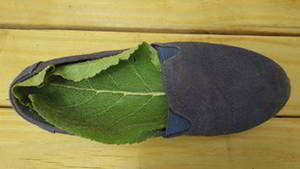 Shoe Insoles- The leaves can provide cushions in shoes when conventional insoles are no longer an option. Combined with the medicinal properties of the leaves, mullein leaf insoles can help to reduce friction that causes blisters and keep feet free from infection.
Shoe Insoles- The leaves can provide cushions in shoes when conventional insoles are no longer an option. Combined with the medicinal properties of the leaves, mullein leaf insoles can help to reduce friction that causes blisters and keep feet free from infection.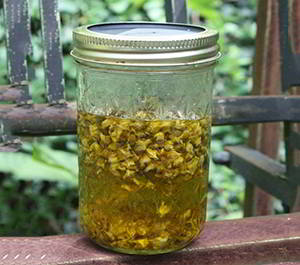 Chest Complaints- The dried or fresh flowers of the mullein plant are often used to improve coughs and other lung and airway issues such as bronchitis, asthma, or croup. Historically, it was frequently used to treat consumption or tuberculosis. Tea made from mullein with honey added makes a great sore throat cure. It is a well-known cold and flu remedy. It’s great for these things because of its expectorant and soothing properties, plus its ability to fight infection.
Chest Complaints- The dried or fresh flowers of the mullein plant are often used to improve coughs and other lung and airway issues such as bronchitis, asthma, or croup. Historically, it was frequently used to treat consumption or tuberculosis. Tea made from mullein with honey added makes a great sore throat cure. It is a well-known cold and flu remedy. It’s great for these things because of its expectorant and soothing properties, plus its ability to fight infection.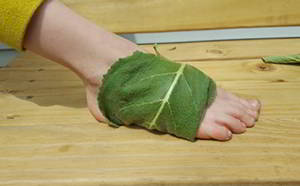 Infection Fighter- Cowboy’s bandages are called just that because it makes a great bandage, even where more modern alternatives are available. This is because it has antibacterial, antiviral, and antifungal properties. This means that along with providing a soft, gentle barrier, the leaves of the mullein plant can help fight off infection in wounds. Tea made from the mullein plant has also been used as a sort of internal antibiotic for treating mild infections. Clinical indications show that mullein may be an effective home remedy for ear infections when placed directly into the ear as a part of an herbal solution. Here are
Infection Fighter- Cowboy’s bandages are called just that because it makes a great bandage, even where more modern alternatives are available. This is because it has antibacterial, antiviral, and antifungal properties. This means that along with providing a soft, gentle barrier, the leaves of the mullein plant can help fight off infection in wounds. Tea made from the mullein plant has also been used as a sort of internal antibiotic for treating mild infections. Clinical indications show that mullein may be an effective home remedy for ear infections when placed directly into the ear as a part of an herbal solution. Here are 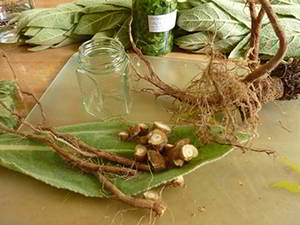
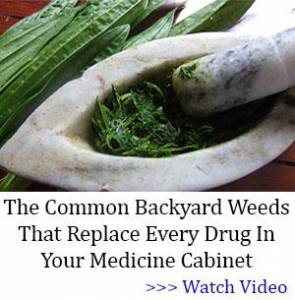
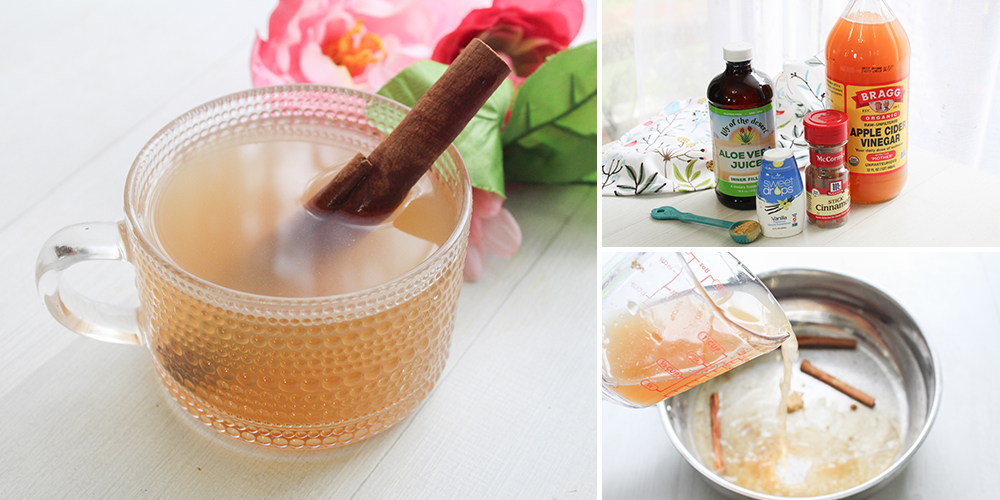
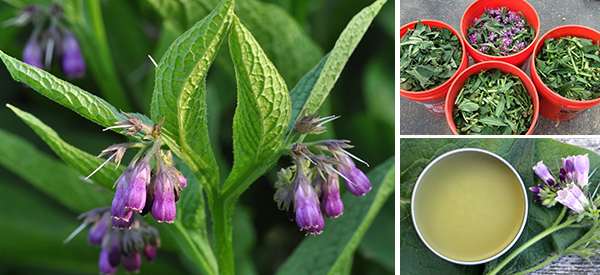
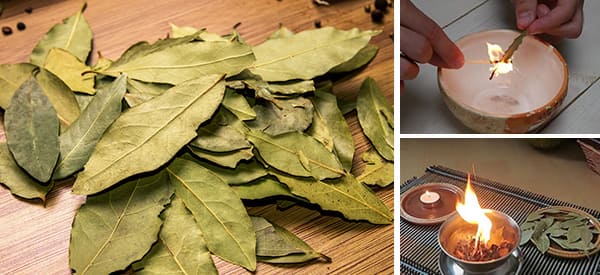
I think I can make and use most all of these and yes with my M.D.’s permission and my friends help who would rather remain a silent partner.
I really liked the article. I have been working on several of my own , using it just on my friend and I. Had to have a friend up in Northern U.S.A. send me some dandelion plants. Dirt still on. I now live in a small area 60 miles south of Houston, Texas USA. Even my Gt-Granny made the tea, as did my Granny and my Momma and as do I.
Hi Patsy,
Thank you so much for your kind words. We really appreciate it.
We are really glad you like the article. Let us know if you used any of these remedies.
God bless!
Great information. I have never heard of the plant. I will look for it to grow and try. After consulting my doctor. I use oils such as tea tree and lavender and peppermint. Thank you for the information.
Hi Trish,
Thank you so much for for your kind words. We are really happy you find the article useful.
God bless!
When my son was young, I was told by my “health food” neighbor that this was a good plant to boil and have him inhale the fumes – after cooled a little. He had terrible croup whenever he got anything. It worked great! AND it was found on the roadsides in Mt. Shasta. 🙂
Hi Olivia,
Thank you so much for your comment and for sharing your personal experience.
Mullein is a very beneficial herb, indeed.
God bless!
I used to find it everywhere in northern Ind. , down in Bloomington, it is not all that easy to find. However, should I find some I plan on using it in as many ways as I can. Your was very nice & I liked it very much, it was quite informative!
Hi Anthony,
Thank you so much for your comment and for your kind words.
As soon as you find mullein, please share your experiences with us.
God bless!
After stalks bloom, collect some seeds…
Is it possible to start my own garden of healing plants.?
I’m not sure I would be able to identify one weed from another and do not want to poison myself. I suffer from chronic pain due to fibromyalgia which developed after my second round of breast cancer. What would you recommend I try to grow with my on going condition. Thank you very much. I’m waiting on your book to arrive so that just might help answer my questions.
GREAT Information.
THANK YOU VERY much for educating us all.
I’m looking forward to be a good sponge, lol To absorb everything I’m reading from you.
Thanks _/|\_
Hi Lettie,
Thank you so much for your comment.
I am so happy that you can learn more from our articles!
God bless!
Great info. I believe mullein leaf is also good for ear aches. Crushed fresh leaves in olive oil. Then filtered through a coffee strainer.
Hi Harold,
Thank you so much for your comment and for sharing this information as well. You are right, one of mullein benefits is easing earache.
God bless!
I love Mullien though have to buy it dried and sent in from abroad. I have a small dog that used to suffer severely with an ear infection caused by yeast. The vet kept giving steroids and antibiotics and it still came back, so change of diet and mullien oil with a little garlic and hey presto, no more steroids. I also use it as a Tea and tincture as I have copd which can be annoying, it really helps
Hi Marissa,
Thank you so much for your comment and for sharing your personal experience.
God bless!
Is this also called Wooly’s Lamb Ear?
Hi Barbara,
Thank you so much for your comment.
Lambs ear (Stachys byzantina) and mullein (Verbascum sp.) are different plants. They have a similar appearance.
Mullein grows as a “foliage rosette” with a central stalk that produces yellow blossoms. Lamb’s ear grows as a “foliage clump” and produces pinkish-purple flowers. While the leaves are quite similar, mullein grows much taller and lamb’s ear leaves are softer.
God bless!
Is is also commonly known as lamb’s ear?
Where is the diy for mullein salve? You mention it but I couldn’t find it.
A big Thank you!!
Gday! From South Australia, Australia. 🦘🐨 found your site by accident but I’m really pleased I have as I found it very informative.
Thank you! Will definitely read again. 👍🤗🌹
I was very blessed this year to have found a second yr. Mullien plant growing in our flower garden. I actually use the leaves much more then the flowers because with only one plant the leaves are much more abundant. I make tea for congestion and sinus relief the results are quick and very effective. Also use the leaves as bandages and poultices for grandchildren bumps and bruises. Here in PA Mullien plants are very proficient along railroad tracks and roadsides; I don’t forage them because of toxicity of the area. Does the plant reproduce itself?
Hi Jan,
Thank you for sharing this with us.
It is very useful.
Mullein (Verbascum thapsus) is a biennial that grows in USDA hardiness zones 3 through 9.
Hybrid types of mullein in the garden are not as invasive as the common type. If you can remove the flower stalk before seeds have dispersed to avoid abundant spread.
God bless!
Why won’t you answer about the diy salve using mullein?
Hi Vicki,
Thank you for your comment.
I apologize for my late reply.
For Mullein Salve you need:
2 cups almond oil
1/2 cup dried mullein leaf (cut and sift)
4 garlic cloves (chopped)
3 oz. beeswax (by weight)
10 drops geranium essential oil
10 drops tea tree essential oil
Recipe:
Pour the almond oil into a double boiler or slow cooker and heat to the lowest setting.
Chop garlic cloves.
When the oil is warm, stir in the garlic. Then stir in mullein leaf.
Place the wire strainer over the glass jar.
Place cheesecloth in the strainer.
Carefully strain out herbs from the oil and return oil to the pot.
Add the grated beeswax.
After the beeswax has melted, remove the double boiler from heat or turn off the slow cooker.
Stir in the essential oils.
Pour the mixture into a few salve containers and cap them securely.
Label the containers with the name of the salve.
Give your salve a one-year expiration date as the oils may go rancid.
I apologize for the author’s mistake to provide the complete salve recipe and photos. We will shortly publish an article on how to Make Mullein Salve.
Thank you for your understanding and support.
God bless!
Thank you very much
In the mullein salve recipe, after you warm the oil & add the garlic & mullein leaves, how long do you let it warm before pouring it out into the glass jar?
Thank you
I love mullein n it grows by my hse. I often stop n get it.
How many mg of dry mullein roots should I use in a capsule or daily. I want to make capsule for support the urinary system.
Hi Sophie,
No recent clinical evidence supports a specific dosage of mullein; however, traditional uses of the herb suggest 3 to 4 g of flowers daily and 15 to 30 mL of fresh leaf or 2 to 3 g of dry leaf.
* Always consult a specialist or your own naturopathic doctor for more information.
This is a good article.
It is the SECOND one to have a “teaser” : ” Here are 5 infections you are most likely to catch when SHTF.”, but no link to a post. Could you provide a link to this article? Thank you.
Hi Carol L,
Thank you for taking the time to point out these issues.
We work hard to give all of our readers a great experience and your feedback is very important to us. It gives us valuable insights which allow us to continually improve.
We made the appropriate changes.
Here is the link you were referring to:
https://www.askaprepper.com/youll-probably-catch-one-5-infectiones-shtf/
Many blessings and good health!
what herbal remedy is good for cellulitis on the legs and a stinking sore on back of leg that won’t heal
I wanted to dig this weed out of my yard but then I remembered the herb stuff so I left it alone, then I came across this article. So cool! I do not have a green thumb but want to start. How do I collect seeds from this plant to start more of this mullein?
Could you tell me how long and wide the taproot could get? The shortest to the longest pls? Thanks